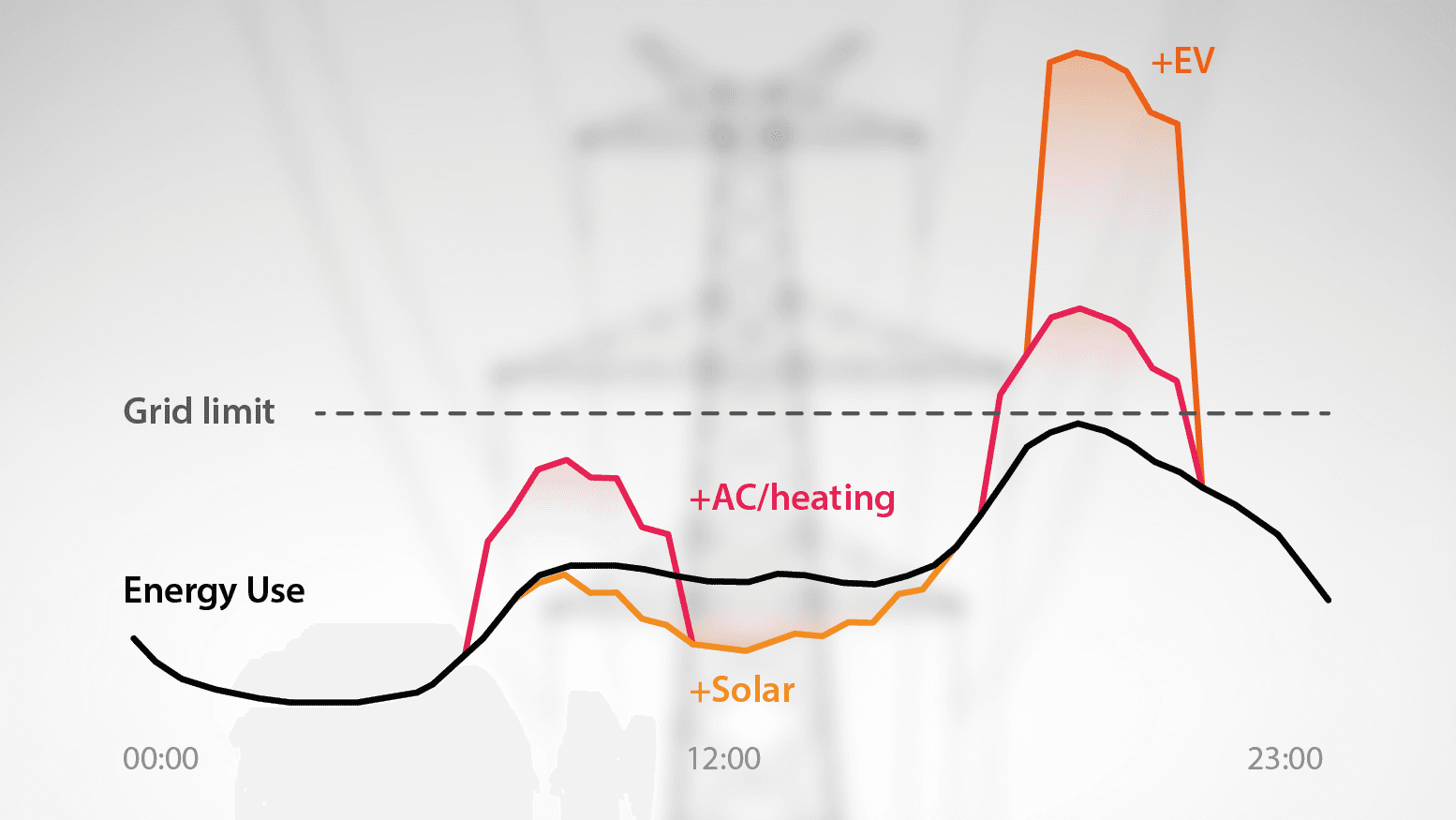
18. August 2025
Power at its limit: When grid capacity is insufficient
More and more electricity is being generated, traded, and demanded, especially from renewable sources. However, it is becoming increasingly clear that the problem is not a lack of energy, but rather the ability to reliably deliver it to where it is needed.
The electricity market and the power grid: two systems, one growing area of tension
The electricity market is digital, international, short-term, and flexible. This is where electricity is procured, traded, and delivered. Contracts are often concluded days or months in advance. The market is based on the principle that electricity is available everywhere as long as someone is willing to pay for it.
The electricity grid, on the other hand, functions analogously, locally, and physically. It consists of power lines, substations, and hubs with limited capacity. Electricity cannot simply “flow” because someone has purchased it. It has to be transported through physical infrastructure, and it is precisely this infrastructure that is often overloaded.
So while there is theoretically enough electricity available on the market, transmission system operators (TSOs) are faced with a different reality: grid bottlenecks occur because too much load hits individual sections of the grid too quickly, especially at peak times.
The invisible border
Grid operators are obliged to ensure the stability of the grid, regardless of how much electricity is traded on the market or generated locally. This means that when a line, substation, or grid area is at full capacity, no additional energy can be absorbed or transmitted. This is not an economic limitation, but a physical one.
These so-called capacity bottlenecks (congestion management) occur in various forms:
- Bottlenecks in the supraregional high-voltage grid: for example, when large amounts of electricity need to be transported from northern to southern Europe, but the lines are overloaded.
- Overloading in the local distribution grid: for example, in urban areas where many households, businesses, and new consumers such as electric charging stations access the same grid at the same time.
- Integration of renewable energies: Fluctuating feed-in from photovoltaics and wind can temporarily exceed grid limits. Electricity is then curtailed, even though it would be cheap and clean.
A typical day provides an example of this. In the morning, electricity demand rises rapidly as heating systems, production facilities, and office equipment all start up at the same time. At midday, the sun provides relief, especially in buildings with PV systems. But in the evening, the situation becomes critical: households return, heat pumps run, lights come on, and more and more electric cars are plugged into sockets at the same time. All this happens in a short period of time, often in a confined grid area. However, grid capacity remains constant; it does not automatically scale with consumption.

What does this mean for companies?
The power supply is changing, and with it the demands on companies. Anyone who wants to integrate new consumers or systems today has to consider more than just technology and economic efficiency. Grid bottlenecks have become a real planning constraint.
For companies, this means that electricity consumption, in-house generation, and load shifting must be planned ahead and coordinated with the grid. This applies not only to strategic investments, but also to day-to-day operations: schedules, load profiles, and operating times. These must increasingly be designed and controlled in a grid-compatible manner.
The solution lies not only in grid expansion, but also in the intelligent use of existing resources. Those who manage their electricity consumption in a grid-friendly manner can avoid bottlenecks and get more out of their existing grid connection. This means:
- Creating consumption flexibility, e.g., through time-controlled consumers or temporary storage
- Avoiding peak loads by better coordinating processes
- Using your own generation in a targeted manner to reduce grid consumption during critical phases
- Linking systems instead of viewing them in isolation (e.g., PV, storage, heat pumps, and charging points as an integrated overall system)
Companies that focus on coordination, flexibility, and sector coupling at an early stage gain independence. They use existing infrastructure more efficiently and reduce their dependence on lengthy grid expansion processes.
And this is precisely where there is room for real innovation: those who control their energy flows intelligently will not only become more resilient, but will also play an active role in solving the problems of an increasingly strained power grid.
From connected assets to an intelligent ecosystem
VGT offers its customers the technological basis for intelligent control of energy systems. The VGT platform makes it possible to connect all assets into a connected overall system.
At the heart of this is the intelligent energy management system GENIA: It analyzes load profiles, user behavior, and weather data in real time, identifies impending grid loads, and decides on the basis of this information how the systems can be optimally controlled via the platform. This automates the flow of energy between generation, consumption, and storage and continuously adjusts it to grid capacities.
Instead of rigid processes, a dynamic system emerges that actively thinks along with the grid: flexible, coordinated, and forward-looking. This ensures greater independence, higher energy efficiency, and makes flexibility a strategic advantage.
Conclusion
The transformation of the electricity supply is presenting companies with new challenges. Those who want to stay ahead in this environment must view energy consumption, generation, and control as a system rather than as individual projects.
With intelligent coordination, grid-friendly behavior, and connected assets, companies can not only make optimal use of existing grid connections, but also actively control their energy flows.
VGT supports you in this endeavor.
With the GENIA platform and energy management system, we connect your energy systems into a smart overall system and create the basis for stable growth despite limited grid capacities.
Want to know more?
Then arrange a chat with us. We'll show you how modern flexibility management works in practice.
Sources:
- https://www.swissgrid.ch/de/home/newsroom/blog/2025/wenn-das-stromnetz-unter-druck-geraet.html
- https://www.swissgrid.ch/de/home/operation/market/congestion-mgmt.html
- https://www.swissgrid.ch/de/home/operation/regulation/planning.html
- https://www.swissgrid.ch/de/home/operation/power-grid/swiss-power-grid.html
- https://www.swissgrid.ch/de/home/operation/grid-data/load.html
- https://wattstor.com/insight/grid-constraints/
- https://www.strom.ch/de/perspective/gegen-netzengpaesse-wie-flexibilitaet-gebaeuden-das-system-stabilisiert


